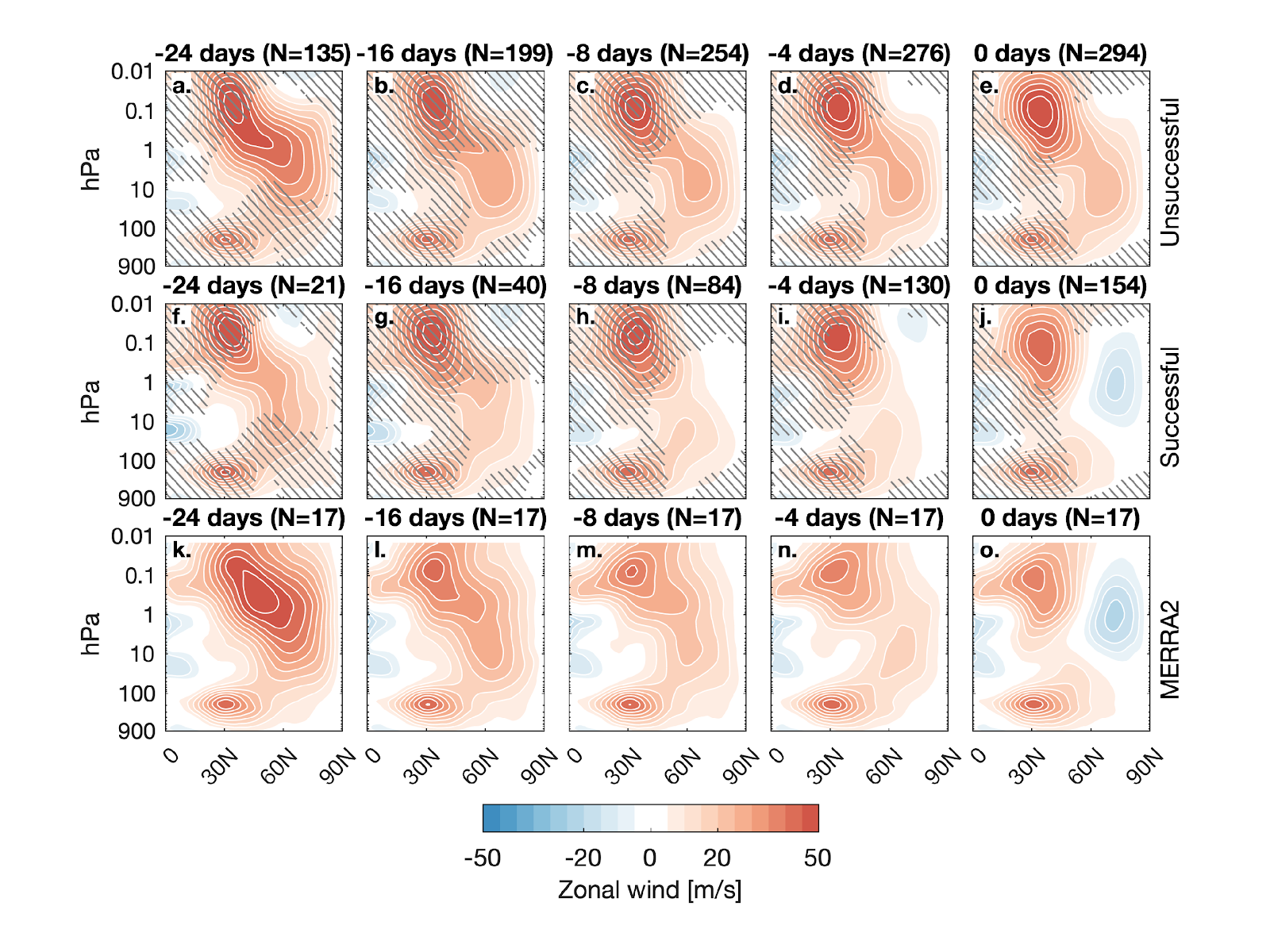Developing a more comprehensive understanding of sudden stratospheric warmings
Sudden stratospheric warmings are one of the most extreme weather events in earth’s atmosphere. A warming occurs when enough planetary-scale waves in the atmosphere break to tear apart the stratospheric vortex, a strong jet stream that circumnavigates the poles in winter. The resulting circulation anomalies descend down to the troposphere and lead to enhanced weather predictability. If we could extend forecasting lead times for sudden warmings, we could improve daily to subseasonal predictability in the troposphere.

The CESM2 (WACCM6) subseasonal reforecast project is a joint ACOM and CGD effort that has produced weekly five member hindcasts from 1999 to 2019, and is now operating in real time. 17 sudden warmings occurred over this period. An effort led by ACOM scientists explored the vast trove of information contained in the hundreds of reforecasts initialized just prior to each of these sudden warmings. The research found that reforecasts initialized with a weaker stratospheric jet had 50% greater skill in predicting a sudden warming.
As the jet weakens, its ability to balance the decelerating effects of the breaking waves becomes less efficient. This is a newly-identified, dynamical positive feedback on sudden stratospheric warming development. The reforecasts initialized with a weaker jet do a better job of coaxing the atmosphere into this positive feedback cycle. Operational subseasonal-to-seasonal forecasts of sudden warmings may be improved with the incorporation of these “weak jet” forecasts.
References
Davis, N. A., Richter, J. H., Edwards, J., Glanville, A. A., A positive zonal wind feedback on sudden stratospheric warming development revealed by CESM2 (WACCM6) reforecasts, Geophys. Res. Lett., revised.